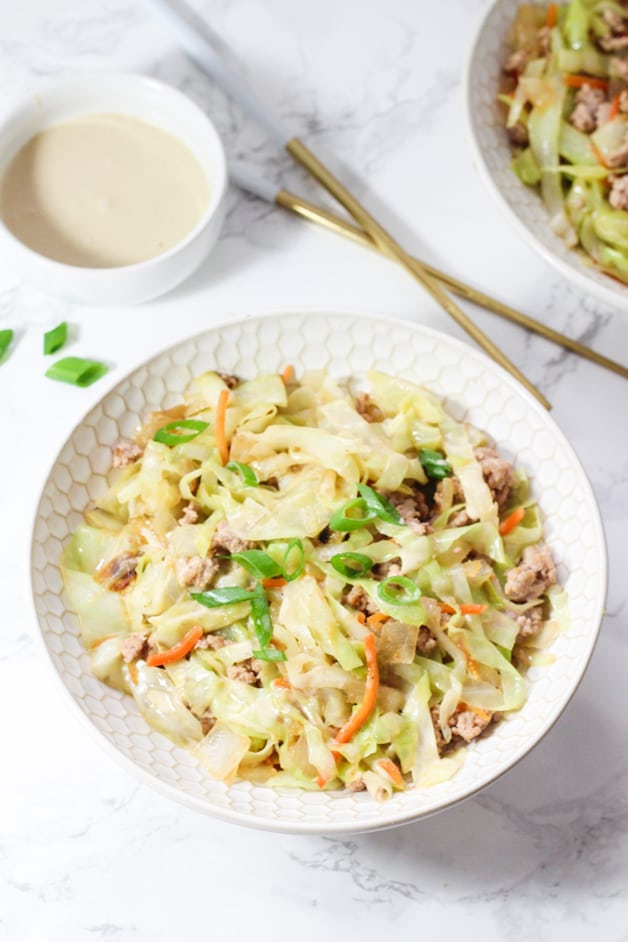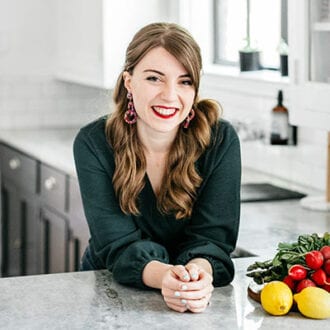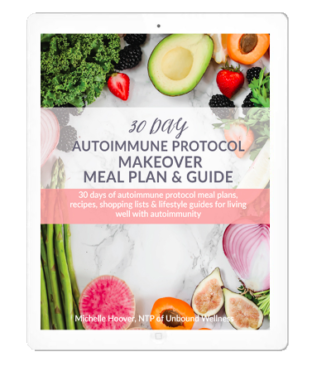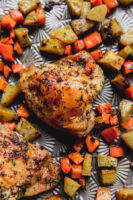Living With a Non-Paleo or AIP Spouse
If you’ve read my blog for a while and watch my Instagram stories, you’ll know that I’m happily married to a wonderful man who supports me, inspires me, and grows with me everyday. However, he is not Paleo or AIP… at all. When I met Daniel over 4 years ago, he was surviving off of prepackaged hardboiled eggs, spaghetti, frozen lasagna and all of your typical bachelor food. When we got married, it was an adjustment to learn how to live a balanced life for both of us being on such different diets. How do you like with a non-paleo or AIP spouse when you’re so committed to your own diet?
I want to point out that my husband still values healthy food. He’s happy when I feed him vegetables and healthier treats… but that doesn’t mean that he also doesn’t want to eat nachos and pizza! He comes from a family with fairly minimal health problems and has he just does’t notice any negative effects of eating junk food every once and while.
So, how do we balance spending time together, eating out, and eating at home on different diets?

1.Educate your spouse on why your diet matters for your health and wellbeing
When Daniel and I first started dating, I was mostly gluten free, and 100% nightshade free. I really explained to him why it mattered. I told him what gluten and nightshades did to my body, where you could find it, and how it would impact my mood and health negatively if I ate any.
Then, when I went grain free and AIP, I actually asked him to read Omnivores Dilema with me that discusses corn and soy in great detail to allow him to get a solid understanding of why I was cutting them out.
Yes, it took some time for him to really understand. Yes, we had some disagreements on some details. But at the end of the day, love requires wanting what’s best for your partner. After educating my husband on why it was important for my health and wellbeing, he was much more on board with supporting me and advocating me.
2. Remember that they can still support you without being compliant with your diet
One of the biggest misconceptions that I hear is that in order to be supportive of someone, you have to do the same diet they’re doing 100%. That’s not necessarily the case.
Don’t pressure your spouse or significant other into compliance if it just doesn’t work. Ask for support in other ways!
My husband still shows support by trying my compliant recipes, making himself dinner sometimes when I don’t want to handle certain ingredients that he wants, and advocating for me in social situations. He’s always the first one to speak up if someone is trying to convince me to eat nightshades, or if they don’t understand my requests.
I am beyond grateful for how supportive my husband is. It’s one of the strongest parts of our relationship! And it doesn’t have to require him going totally gluten free 😉
3. Define clear cross contamination rules
My husband and I have clear rules of what can and cannot come into the house. For example, dairy isn’t detrimental to my health, so he still eats tons of cheese. However, I just ask him to be thorough with cleaning up after using cheese. Where as, nightshades are much more an issue for me, and these rarely come into the house.
Daniel knows what’s okay for me to have around, and what isn’t, and I’ve educated on how to handle certain cross contamination risks like double dipping in sauces, washing silverware thoroughly, and so forth.
That doesn’t mean that my husband is nightshade free or gluten free. He still enjoys these foods while eating out or on rare occasions, but setting the ground rules for eliminating cross contamination risks saves a lot of headaches and arguments in the future.
4. Find compliant meals that you both love
Just because your significant other isn’t paleo or AIP doesn’t mean that they still can’t enjoy compliant meals! My husband and I have several favorites that we share.
Here are some great ideas for foods that you can share…
- Bacon ranch chicken poppers. Who doesn’t love those flavors?
- Veggie nuggets. My husband loves these!
- Brownie skillet. Perfect for two 🙂
- Egg roll in a bowl. My husband and I both love this!
5. Use the “layering method” for meals that you share
One of my favorite strategies for sharing meals is the layering method. Essentially, you start with a basic meal that’s compliant for your diet, and layer on extras that your significant other will enjoy. For example, making my Instant Pot Chili and adding on good quality chips and cheese for my husband.
My husband and I do this often with a myriad of different meals, and we’re always happy with the outcome!
7. Shop for better quality versions of their favorites
Daniel may not be paleo or AIP, but that doesn’t mean that he has to eat junk! Regardless of what you spouse chooses to eat, I still always advocate for getting better quality versions to ensure that everyone stays healthy.
Here are some favorites that I like to get for Daniel…
- Primal kitchen mayo
- Rice pasta
- Jackson honest tortillas chips
- Siete tortillas
- Sourdough or sprouted bread (I’m fine with some occasional gluten in the house as long as he’s careful)
- Coconut milk ice cream
- Simple mills crackers
- Grass-fed cheese and milk
8. Explore ways to spend time together that don’t revolve around food
Though going out to dinner together is fun, it’s not always necessary for spending time together! Daniel and I focus on spending time together in more ways than just eating out.
Here are some of our favorites…
- Going to the movies (and bringing my own snacks)
- Having movie night at home with a shared meal
- Hiking
- Shopping
- Bowling
- etc.
I know that relationships are hard in a myriad of different capacities, but I hope these tips helped on the food front!







